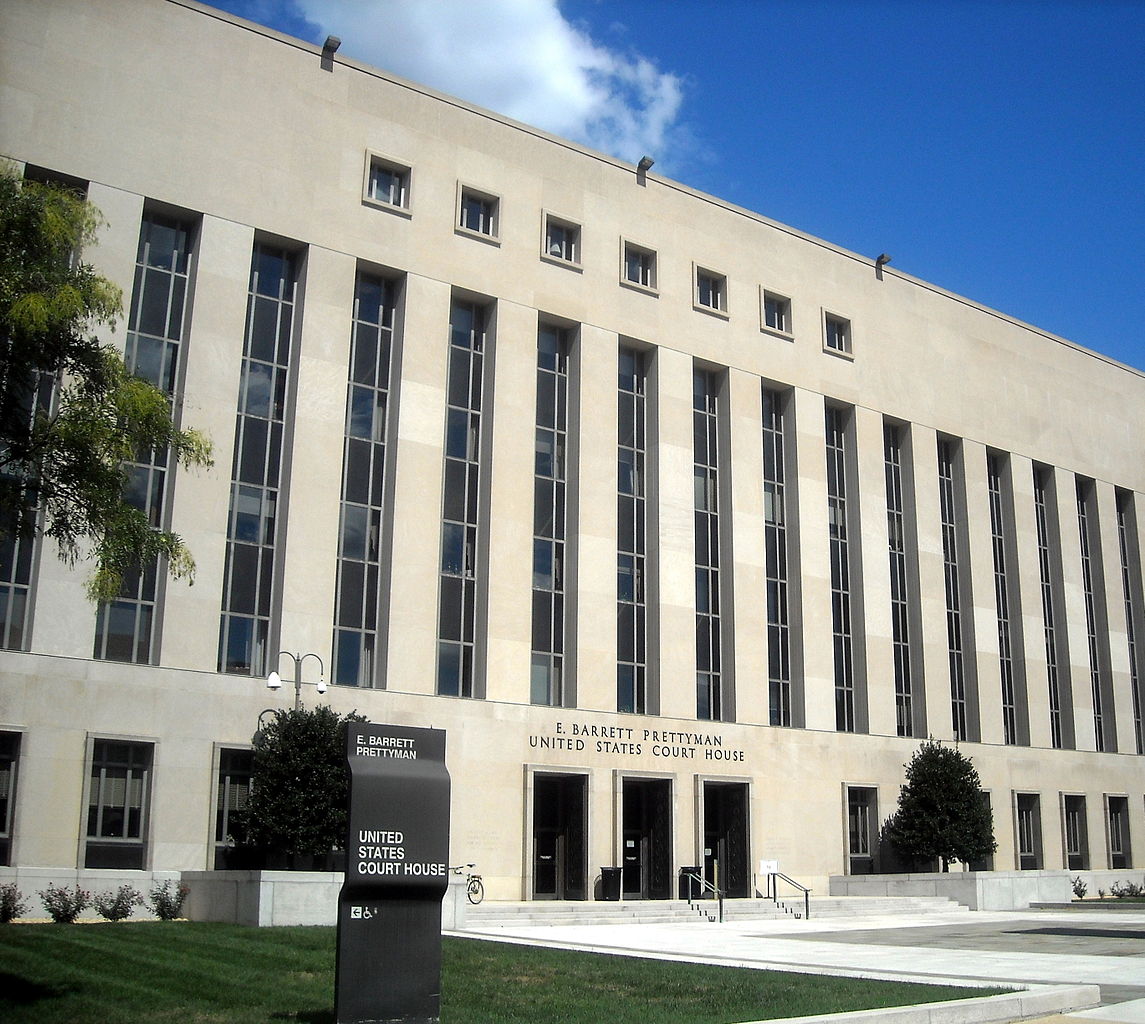The Use and Abuse of Administrative Leave
Understanding a central tool in DOGE’s war against the federal workforce.

Published by The Lawfare Institute
in Cooperation With

The website for the U.S. Agency for International Development (USAID) went dark two weeks after President Trump’s inauguration. When it returned, it displayed a short message on a white background: “On Friday, February 7, 2025, at 11:59 pm (EST) all USAID direct hire personnel will be placed on administrative leave globally.”
That same day, a federal judge temporarily blocked the administration’s plan to place 2,200 USAID employees on administrative leave. But Trump appears bent on dismantling the agency—at least according to Elon Musk, the assumed head of the Department of Government Efficiency (DOGE), who posted, “With regards to the USAID stuff, I went over it with (the president) in detail and he agreed that we should shut it down.”
Administrative leave has become a central tool in DOGE’s war against the federal workforce. Beyond USAID, the Department of Energy, the Department of Justice, and the Environmental Protection Agency have placed employees on administrative leave. Employees working on diversity and inclusion issues have suffered the same fate. The administration has used administrative leave not only to remove employees involuntarily but also to encourage voluntary separations. The deferred resignation program also offers seven months of administrative leave to employees who choose to resign. By using administrative leave, DOGE has halted the operations of dozens of programs in multiple agencies.
This use of administrative leave likely violates the plain text of the Administrative Leave Act of 2016. The Trump administration is relying on Biden-era regulations that limit the scope of the act to investigations. Nevertheless, those regulations comport with neither the text nor the spirit of the law. A lawsuit challenging the use of leave may result in this rule being overturned.
The current moment demonstrates the importance of guardrails like the Administrative Leave Act to preserving administrative capacity. A broad interpretation of the act allows presidents to dismantle entire agencies by removing employees. By impeding agencies’ implementation of the laws enacted by Congress, the president has shown little respect for his constitutional obligation to faithfully execute the law.
The History of the Administrative Leave Act
Administrative leave describes an authorized absence without a loss in pay. It is distinguishable from other forms of leave, such as parental leave and annual leave, which are benefits granted to federal employees. Administrative leave operates as a catch-all form of leave. No statute explicitly authorizes federal agencies to place employees on administrative leave. Instead, the Office of Personnel Management (OPM) has identified administrative leave as an implied power within the federal housekeeping statute (5 U.S.C. § 301). Agencies have historically used administrative leave for a variety of reasons, including severe weather, blood donations, Mardi Gras, voting, conferences or training, and investigations into misconduct.
Understanding the Trump administration’s inappropriate use of administrative leave requires legislative context. In 2014, the Government Accountability Office (GAO) found that federal agencies inconsistently used and recorded administrative leave. Agencies differed in which activities were eligible for administrative leave, and some agencies authorized administrative leave for activities covered by other laws. While most employees used less than 20 days of administrative leave from 2011 through 2013, more than 57,000 employees (3 percent of federal employees) used between 1 month and 3 years of administrative leave. GAO estimated that agencies spent $3.1 billion in salary for individuals on administrative leave during this period. Agencies explained that longer periods of leave were often used for investigations into alleged misconduct.
The House and Senate differed in their efforts to reform administrative leave. The House version of the Administrative Leave Act did not explicitly define administrative leave, but it placed limitations on the use of leave for investigation. It specified, “During any calendar year, an employee may not be placed on administrative leave ... for more than 14 total days for reasons relating to misconduct or performance.” The House committee report described the act as narrowly creating “a standard process for the use of administrative leave in cases of misconduct and poor performance, which will help curb the overuse of administrative leave within the federal government.” It did not address the use of administrative leave for other purposes.
The Senate version of the act adopted a more comprehensive regime for administrative leave. Unlike the House version, the Senate version disentangled administrative leave from investigative leave by creating four new types of leave. First, the act established “a definition of administrative leave that is separate from other forms of paid leave or excused absence already authorized and limits the use of administrative leave to five consecutive days at a time.” Second, it provided “authorization for leave that becomes necessary as a result of weather or safety issues.” Third and finally, “separate from the maximum five-day administrative leave, the bill establishe[d] two new forms of leave for excused absences due to personnel matters: investigative and notice leave” (emphasis added).
Congress enacted the Administrative Leave Act as part of the National Defense Authorization Act of 2017. The act closely resembled the Senate’s more expansive version. Congress expressed that “administrative leave should be used sparingly.” In 5 U.S.C. § 6329a, Congress defined “administrative leave” as “leave without loss of or reduction in pay” that is “not authorized under any other provision of law.” By its plain text, § 6329a enshrines administrative leave as a catch-all form of leave. The same provision limits administrative leave to 10 days in a calendar year. This limit departs from both the House and the Senate versions. The Senate version focused on consecutive days, while the House limited administrative leave only for investigative purposes. Section 6329a makes no mention of investigation or misconduct.
The act also provides for investigative leave, notice leave, and weather leave. Relevant here, Congress defined “investigative leave” as “leave without loss of or reduction in pay” that “is not authorized under any provision of law” “in which an employee who is the subject of an investigation is placed.” This provision implies that employees will be placed on administrative leave under § 6329a for 10 days before being placed on a maximum of 90 days of investigative leave.
The Biden Regulations
The Administrative Leave Act instructed OPM to prescribe regulations implementing its provisions within 270 days of enactment. OPM proposed its initial rule in August 2017 during the first Trump administration. The agency, however, did not finalize the rule until the end of the Biden administration.
The final rule recognized that administrative leave is a form of paid leave “for general purposes not covered by other types of leave.” In the preamble to the final rule, OPM described § 6329a as “the exclusive authority for administrative leave for employees covered by title 5.” Accordingly, the regulations maintain administrative leave as the catch-all form of leave, recognizing that agencies may no longer rely on the federal housekeeping statute as authority for granting administrative leave.
As proposed initially, the regulations would have applied the 10-day limit to all forms of administrative leave. Indeed, § 6329a states, “During any calendar year, an agency may place an employee in administrative leave for a period of not more than a total of 10 work days.” The proposed rule offered the most natural reading of § 6329a because the statutory provision applies to “administrative leave” without limitation.
Yet the final rule adopted a much narrower interpretation. It stated that the 10-day limit applies only to administrative leave “for purposes of conducting an investigation” and “does not apply to administrative leave for other purposes.” OPM concluded that the phrase “an agency may place” suggests that “the action to put the employee in administrative leave status is initiated and controlled by management, with or without the employee’s consent.” By contrast, the statutes governing other forms of leave describe the agency as “grant[ing]” leave. As a policy matter, OPM reasoned it would be “illogical” that an employee who is placed on administrative leave for an investigation would be prevented for the remainder of the year from using leave for “voting, or a blood drive, or a COVID vaccine, or any other plainly acceptable and appropriate use.”
OPM tortured the plain text to arrive at this interpretation. As the OPM rule acknowledges, § 6329a provides a broadly applicable definition of administrative leave. The provision makes no mention of investigation, misconduct, or performance. Indeed, Congress adhered closely to the Senate’s version of the statute, which sought to create a system of investigative leave that operated “separate from the maximum [10]-day administrative leave.” If Congress wanted the Administrative Leave Act to govern only investigative leave, it would have adopted the House’s version of the statute, which specified that the limit applied only to administrative leave “for reasons relating to misconduct or performance.” Likewise, it would have placed this limitation in the statutory provision governing investigative leave—not the provision governing general administrative leave.
OPM’s reliance on the phrase “an agency may place” is strange. As OPM acknowledges, the agency may place individuals on administrative leave with or without the consent of the employee. OPM distinguished administrative leave from these other forms of leave because administrative leave “is initiated and controlled by management.” By contrast, OPM argued that other forms of leave are initiated by the employee and “granted” by the agency. Agency management, however, controls other forms of leave too because it retains the discretion to grant or deny leave when initiated by the employee. OPM’s semantic argument collapses quickly. Indeed, the Senate’s discussion of the 10-day limit describes agencies as “granting” administrative leave, suggesting that the Senate did not perceive a meaningful distinction between “place” and “grant.” The use of “place” instead of “grant” in the statute simply acknowledges that some administrative leaves are nonconsensual.
The legislative history undoubtedly demonstrates that Congress was concerned with administrative leave used for investigative purposes. Yet the Senate report reflected broader concerns as well. The report opened by describing “the lack of uniformity of the use of administrative leave across the Federal Government.” In describing the inconsistency in agency policies, the report stated:
These inconsistent policies are troubling not just because it is difficult to conduct proper oversight over the use of paid administrative leave without accurate data, but because some agencies currently record leave that is otherwise authorized in statute by Congress—certain union activities, certain military activities, serving as an organ donor, and jury duty—as administrative leave. When agencies improperly record these types of leave as administrative leave, it is difficult for agency watchdogs—including Congress—to determine how much administrative leave is actually being used and to hold agencies accountable for its use.
The Senate also worried that “indefinite administrative leave” could “be abused by an agency to retaliate against a whistleblower.” OPM’s interpretation of the 10-day limit does not address the concern that agencies may use administrative leave to punish employees who are not under investigation. Accordingly, the Senate report reflected a broader concern about abuses of administrative leave outside the investigative context, and the 10-day limit addressed those concerns.
The Senate also sought to expressly remove any other authorization for leave. As discussed above, OPM derived the power of administrative leave from 5 U.S.C. § 301. The Senate explained:
This period of five days is not a cap on the amount of total excused absence an agency may grant to employees, as longer periods may be used in the case of investigative and notice leave, detailed below, or other forms of statutorily authorized paid leave. However, agencies will not be permitted to provide for excused absence as an exercise of agency discretion under 5 U.S.C. §§ 301–302 or otherwise outside of that which is authorized by this bill or other authority provided by statute.
OPM’s interpretation returns the law to the status quo by allowing agencies to use unfettered administrative leave except in cases of investigation.
In the past, OPM may have received deference for its interpretation of the Administrative Leave Act. The Chevron doctrine required courts to defer to an agency’s reasonable interpretation of an otherwise ambiguous statute. Of course, Chevron is dead. In Loper Bright v. Raimondo, the Supreme Court held that courts must use their independent judgment to determine the best meaning of the statute. I struggle to see how the OPM rule adopted the best meaning of the 10-day limit on administrative leave.
To be clear, I think OPM raises a valid policy concern. Administrative leave provides agencies with the necessary flexibility to manage their workforces. Agencies can use administrative leave in ways that promote prosocial behavior and expertise building. Moreover, I understand that the Administrative Leave Act constrained agency discretion and, therefore, agencies may want to interpret the act in ways that preserve that discretion. I do not believe, however, that OPM’s interpretation best comports with either Congress’s intent or the statute’s plain text. Indeed, the 10-day limit imposes a meaningful guardrail that prevents an administration from using administrative leave as a tool to punish political dissenters. Congress likely overcorrected, but OPM cannot fix Congress’s policy mistake.
The Abuse of Administrative Leave
The current moment shows the dangers of OPM’s interpretation. An unfettered power of administrative leave allows presidents to effectively dismantle entire agencies. Congress cannot have intended for presidents to use administrative leave in a way that would make it impossible for agencies to administer the programs Congress enacts into law.
Ultimately, the Trump administration’s actions do not comport with either the text or the spirit of the Administrative Leave Act. In a Jan. 20 memo, OPM Acting Director Charles Ezell stated, “The flexibility given to agencies in using administrative leave reflects the fact that ‘heads of Executive agencies have broad authority to manage their organizations, including the authority to grant administrative leave, unless prohibited by law.’” This statement cites a fact sheet that relies on the federal housekeeping statute. The legislative history shows that Congress sought to prevent agencies from using the federal housekeeping statute to escape the requirements of the Administrative Leave Act.
Ezell instructed agencies to use administrative leave when an agency is being restructured or eliminated. He explained, “Placing an employee on paid administrative leave may be an appropriate action where the agency component in which the employee works is being eliminated or restricted, or where the agency weighs changes to the individual’s role at the agency as part of a workforce realignment.” The formal elimination or restructuring of an agency will take longer than 10 days and, therefore, I struggle to envision a situation in which administrative leave is lawfully used for these purposes. Even if the OPM rule stands, the Trump administration’s actions appear to violate the rule’s instruction that the agency should consider “the effect of productivity and the agency’s ability to meet mission needs” when developing policies for administrative leave. Placing all employees on administrative leave will frustrate the agency’s mission.
Moreover, the use of administrative leave to dismantle agencies raises constitutional concerns. Congress uses these agencies to implement programs enacted into law. The Take Care Clause of the Constitution provides that the president “shall take Care that the Laws be faithfully executed.” Faithful execution requires a sufficient level of administrative capacity, which agencies derive from their workforces. Without a workforce, the law cannot be executed. Presidents who deconstruct agencies without congressional authorization violate the spirit of Article II.
The president has legal paths to eliminate agencies and the programs they administer. If Congress and the president decide that the government should no longer perform particular activities (e.g., provide foreign aid), then the solution is to repeal the laws mandating those activities. Dismantling an agency before repealing the laws it administers is premature.
Of course, this episode raises broad questions about the incentives presidents have to build and maintain administrative capacity across the federal government. For many years, political scientists asserted that presidents had such incentives. Contrary to this conventional wisdom, David Lewis and I have shown that “neglect—rather than proactive building or deconstructing of capacity—is the norm for most agencies.”
The current moment illustrates the vulnerability of American institutions to destruction. The lack of investment leaves many administrative agencies with insufficient personnel and money to operate during an average presidency. Building this administrative capacity would take years, millions of dollars, and the active involvement of the president. Yet destroying whatever capacity exists takes only moments. That is why the guardrails provided by laws like the Administrative Leave Act are important and must be respected.





